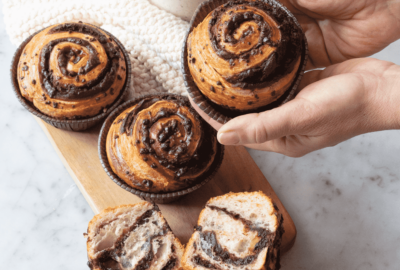Using tinned foods for cooking can save time, money and reduce food waste, but they also present opportunities to create tasty, innovative dishes. With rising food prices, finding innovative ways to use canned goods is becoming a growing trend. Celebrity chef Yotam Ottolenghi’s latest book “Shelf Love” provides plenty of advice on how to make meals using canned products and store cupboard essentials to inspire home cooks and professional chefs alike.
Canned foods have a long shelf life – over three years on average – which means they can be kept in store cupboards ready for when you need them. Restaurateur Kathy Siddell puts canned fish centre stage at her Saltie Girl restaurants, in London, Boston and Los Angeles. There are 106 varieties on the London menu, including smoked anchovies, sardines, cockles, razor clams, scallops and mackerel.
The amount of preparation is reduced with canned food. For example, tinned potatoes are already peeled before they are canned. This is one of the main attractions for chef Theo Michaels, the Canned Food UK ambassador. He says, “What I love about tinned foods is that much of the hard work is done for you – ingredients are often peeled, chopped and prepped so that all you need to do is open the tin. Using canned ingredients offers an opportunity to maximise margins with non-perishable goods. It’s also a way of obtaining foods that are difficult to source locally.”
He points out that in Europe, top quality canned food is revered. “They promote canned food such as exceptional tinned anchovies or octopus as part of an antipasto course. Or San Marzano canned tomatoes served with a splash of Worcestershire sauce and toasted focaccia.”
Robert Fell from Canned Food UK says “Tinned fish is certainly having a moment. Thanks to the TikTok trend to serve canned fish such as sardines and mackerel in a tapas style as a romantic meal for two, we’ve seen an explosion in interest in these types of canned products. There’s also an increasing number of vegan products available in cans – not vegan versions of classic favourites, but many core ingredients such as banana blossom and jackfruit are now more readily available in canned formats.” Canned Food UK has recently been working with Billy Wright and Jack Layer, former Masterchef finalists and influencers to create a vegan dinner party menu with dishes such as Indian bhaji burger and vegan pavlova, created using tinned ingredients.
Despite the wave of activity, consumer confidence in canned foods still has a way to go. Research from Zero Waste Scotland found that over half of Scotland’s consumers had concerns about buying tinned food, commenting that it was unhealthy, for the elderly and a “last resort”. It launched “CanPaign” urging consumers to take a fresh look at canned food in a bid to save money and food waste. Pop up restaurants were located in various Scottish cities where TV chef Julie Lin and co-owner of Ga Ga restaurant in Glasgow, served dishes made only from canned foods such as fish cakes, bao buns and chickpea curry.
Julie says, “Tinned foods give you access to foods year-round. They help keep rising food bills lower and reduce the amount of food that goes off and gets thrown away. Tinned vegetables and pulses can be used to create an array of different dishes such as lentil patties with green chilli dip, channa masala with pickled red onions or aubergine and vegetable tagine.”


